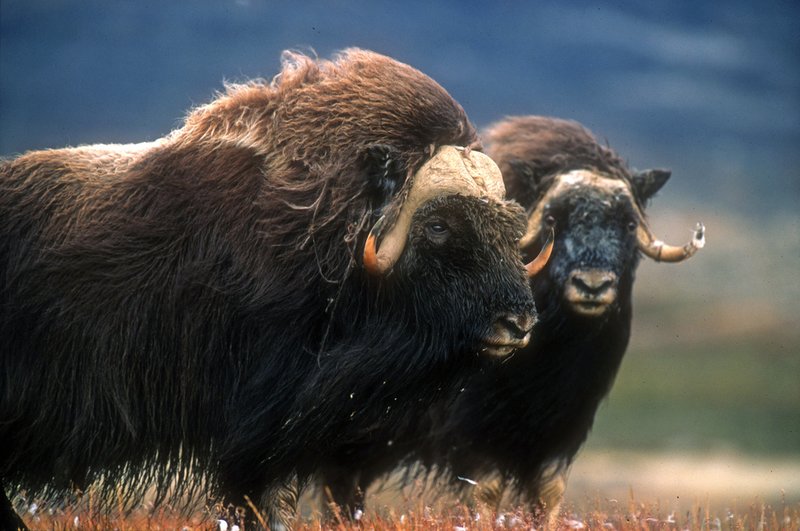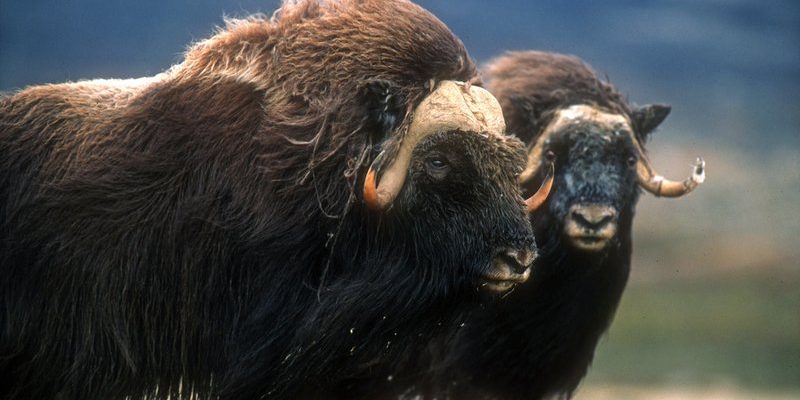
You might be wondering, what exactly does that mean for our planet? Well, the muskox isn’t just wandering aimlessly; it’s part of a complex web of relationships that help maintain the health of its habitat. From the grass it grazes on to the predators it attracts, each aspect of the muskox’s life impacts the ecosystem it inhabits. Let’s dive into the world of this remarkable animal and explore how it shapes its surroundings, all while underscoring the importance of conservation.
What Is a Muskox?
Muskoxen (Ovibos moschatus) are large herbivorous mammals native to the Arctic regions of North America and Greenland. They are known for their thick, shaggy coats that can be up to 60 centimeters long. This unique fur helps them endure freezing temperatures, sometimes dropping to as low as -40°F. But there’s more to these creatures than just their impressive coats.
Typically, muskoxen weigh between 400 to 900 pounds and can stand about 4 feet tall at the shoulder. Their horns, which can grow up to 2 feet long, are used for protection and social interactions within herds. Muskoxen are social animals, often forming groups of 10 to 20 individuals, although larger herds can sometimes be spotted. Their social structure plays a vital role in their survival against predators like wolves and bears.
Understanding these basics sets the stage for appreciating how muskoxen influence their ecosystem. They may seem like simple herbivores, but their behaviors and interactions are far more significant than they appear.
The Grazing Impact on Vegetation
Let’s talk about food! Muskoxen are herbivores, mainly feeding on grasses, mosses, and lichens. Their foraging habits have a profound effect on the vegetation in the tundra. By grazing on certain plants, muskoxen help control plant population and diversity.
When muskoxen consume grasses, they can promote the growth of certain species while limiting others. Here’s the thing: this selective grazing can create a healthier ecosystem by reducing overcrowding of specific plants and allowing new growth to flourish. Think of it like a gardener pruning their plants to ensure the best blooms.
But it’s not just about the immediate effect. The plants that thrive due to muskoxen grazing provide food and habitat for other animals. For example, small birds might nest in the dense foliage that grows after muskoxen have grazed, leading to a flourishing community of wildlife.
Soil Fertility and Nutrient Cycling
You might not think about it right away, but muskoxen play a role in soil health, too. As they graze, their hooves trample the ground and stimulate soil mixing, which can improve aeration and nutrient availability for plants. Their waste contributes to the nutrient cycle, enriching the soil with essential elements necessary for plant growth.
In essence, muskoxen are like natural gardeners. Their feces not only fertilize the soil but also create microhabitats for bacteria and fungi, which are crucial for breaking down organic matter. This cycle supports the entire ecosystem, allowing diverse life forms to thrive.
Without muskoxen, the health of the tundra could decline, leading to less plant diversity and a weaker food web.
Role as Prey and Predator Dynamics
Muskoxen aren’t just important as herbivores; they are also a food source for larger predators. Wolves, for instance, rely on muskoxen as a key part of their diet. This predator-prey relationship creates a balance within the ecosystem.
When wolves hunt muskoxen, they help regulate the muskox population. A healthy balance ensures that neither species overpopulates, which could lead to resource depletion. For instance, if muskoxen numbers increase unchecked, they might overgraze and harm their habitat. A steady number of predators keeps this in check, ensuring that the ecosystem can sustain itself.
Interestingly, muskoxen have their own defense strategies. When threatened, they form a circle, with the young and vulnerable in the center. This behavior not only protects them but also illustrates the complex social interactions within their herds.
Climate Change and Its Effects
As you may know, climate change is affecting ecosystems around the world. In the Arctic, rising temperatures and changing weather patterns are shifting the delicate balance that muskoxen rely on. Warmer winters can lead to ice layers forming over their food sources, making it harder for them to graze.
Additionally, changes in vegetation patterns can impact their health and reproductive success. With less food available, muskoxen may struggle to survive, which could have cascading effects throughout the ecosystem.
Here’s a thought: By monitoring muskoxen and their habitats, scientists can gain insights into broader environmental changes. Their responses can serve as indicators of the health of the Arctic ecosystem, allowing us to take action where needed.
Conservation Efforts and Their Importance
Given their critical role in the ecosystem, conservation efforts aimed at protecting muskox populations are vital. Organizations and governments are working to preserve their habitats and monitor populations to ensure their survival.
Conservation efforts might include protecting migratory routes, reducing hunting pressure, and educating the public about the importance of muskoxen in the ecosystem. By raising awareness and working to maintain healthy populations, we can ensure that these incredible creatures continue to thrive.
If you’re passionate about wildlife, consider supporting conservation groups or even visiting local wildlife reserves. Your involvement can help make a difference in sustaining not just muskoxen but the entire ecosystem they support.
Muskoxen may look like gentle giants lumbering through the tundra, but their impact on the ecosystem is profound and multidimensional. From shaping plant life to influencing predator dynamics, they play crucial roles that keep the Arctic environment balanced and thriving.
As we face ongoing environmental challenges, understanding the muskox’s role in its ecosystem helps us appreciate the interconnectedness of life on Earth. By safeguarding these magnificent creatures, we’re not just protecting a species; we’re preserving the health of an entire ecosystem. So, let’s celebrate the muskox! After all, every piece of the puzzle counts in the grand tapestry of nature.

